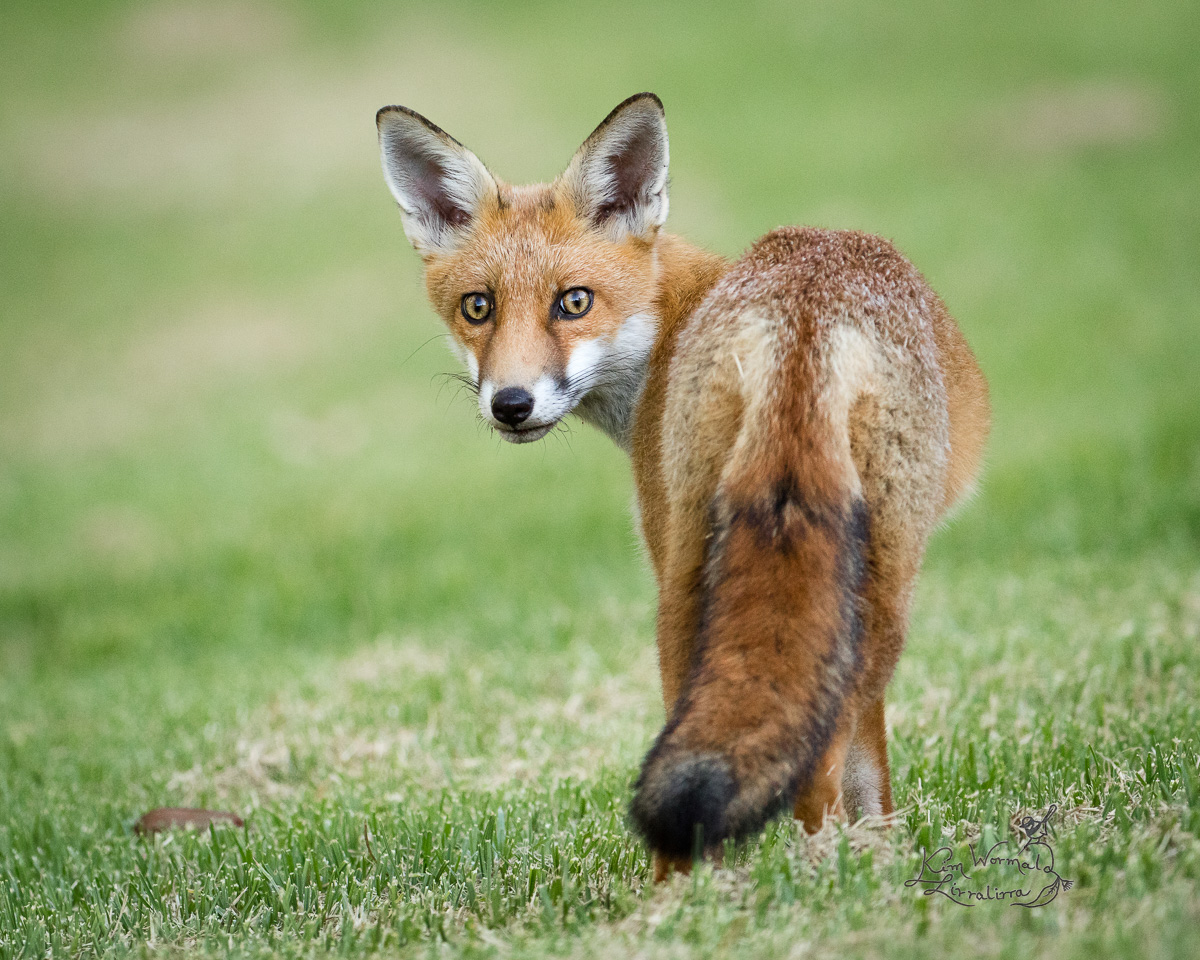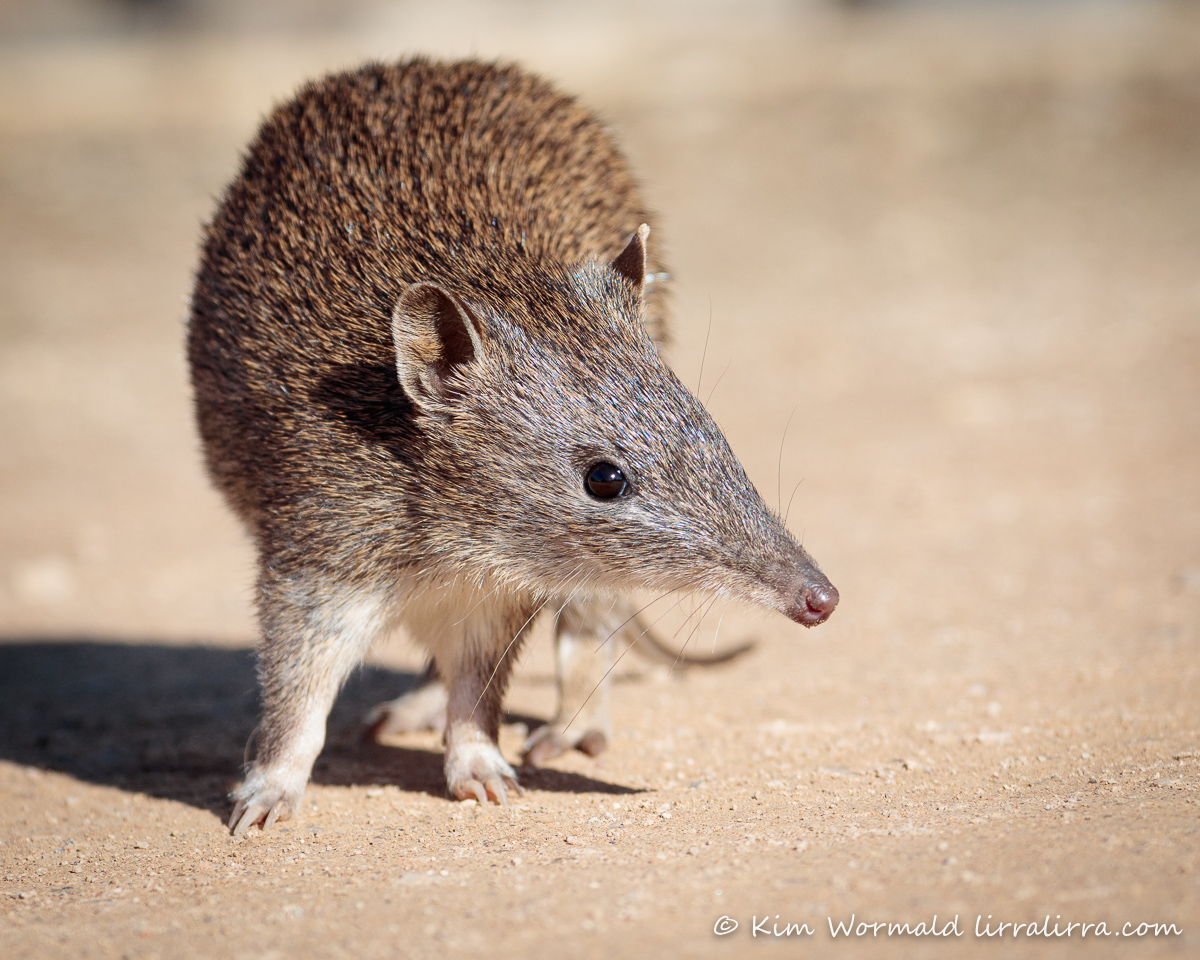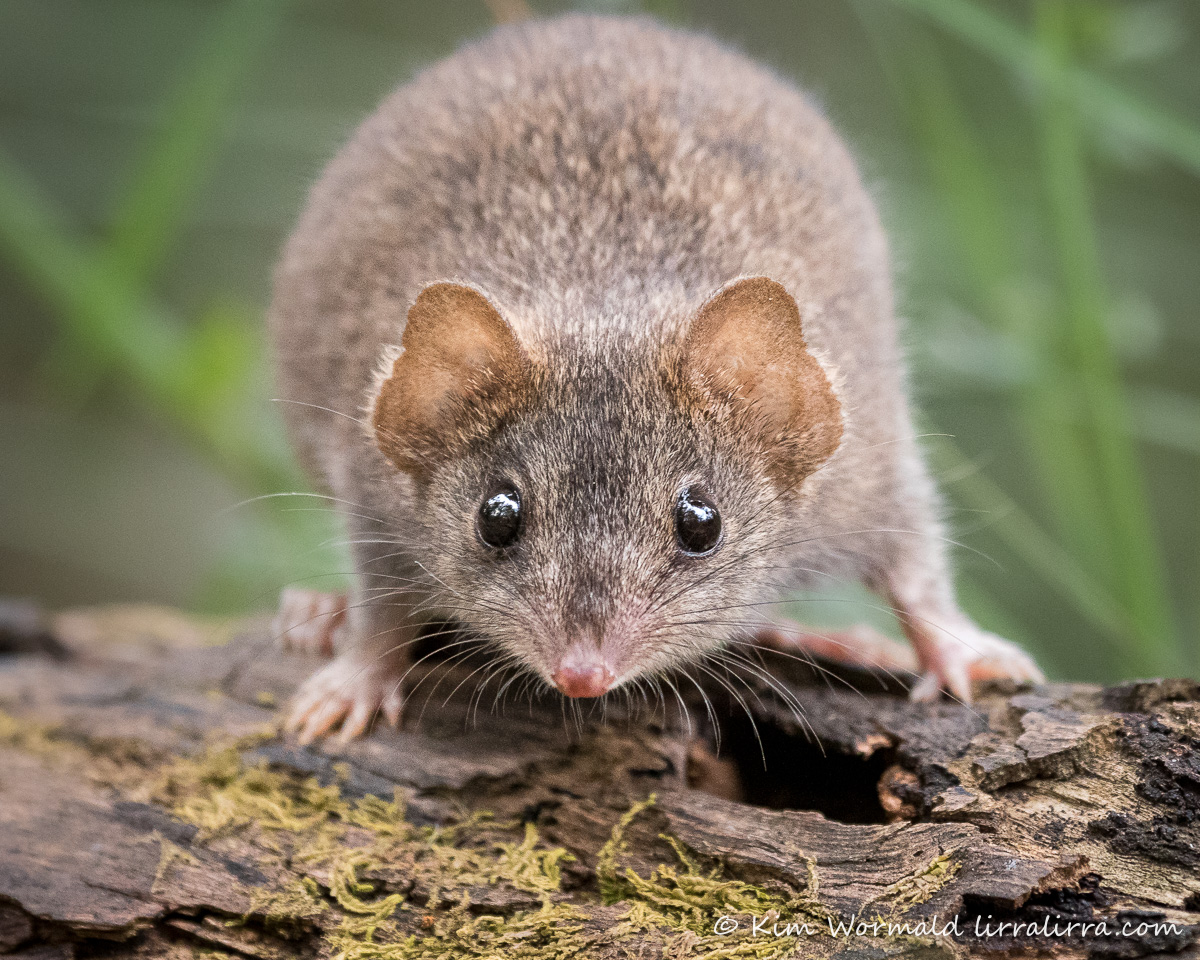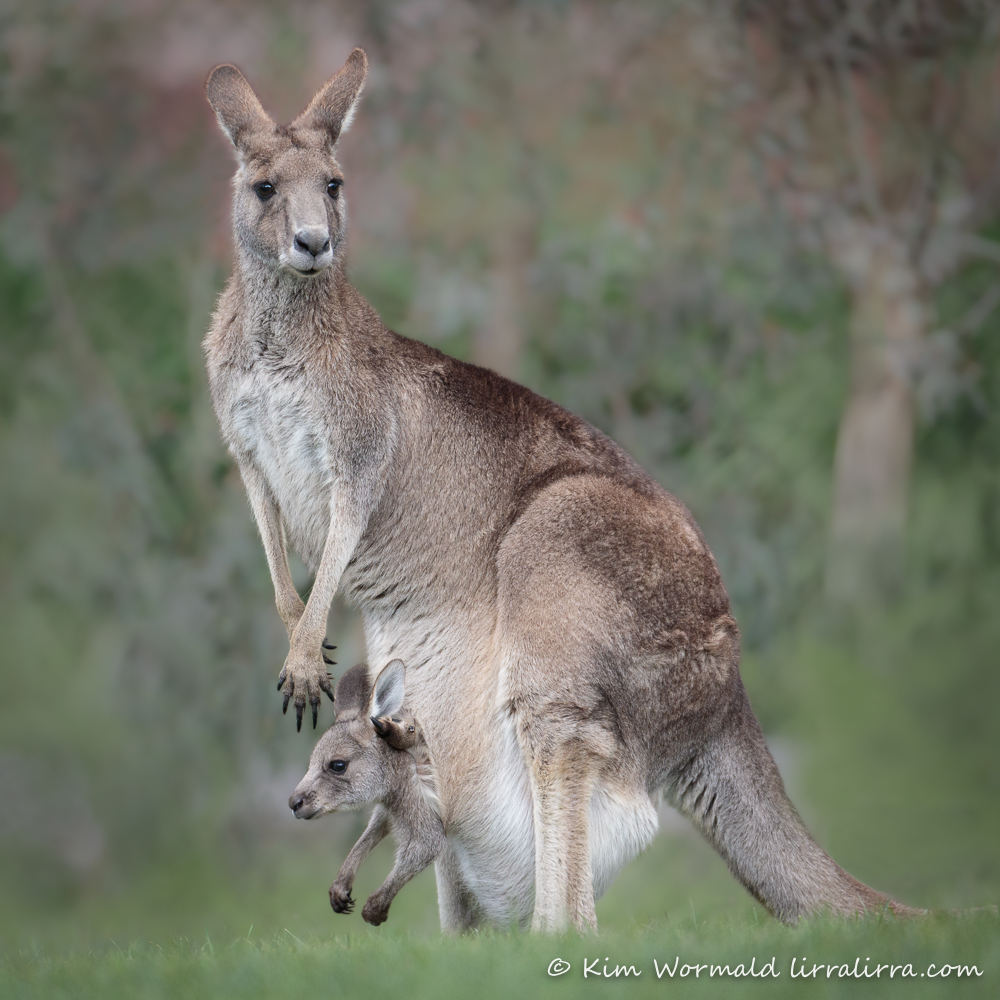Although I’ve dedicated lirralirra to birds I am a wildlife photographer and I love to photograph whatever wildlife I see around me. So, for a huge change I thought I’d share a contentious fox, a beautiful bandicoot, a sweet pouch joey and a mouse-sized marsupial.

I shared this young fox photograph on Facebook along with this caption: “Foxes have been calling at my place – they are very noisy when mating! I photographed this young fox when I was hidden beneath my fabric hide. It glanced at me when it heard the near silent click of my shutter button. They are beautiful animals that absolutely never should have been brought here. If only all they ate were rabbits and myna birds.” The post received heaps of comments ranging from extolling its cuteness to saying the only good fox is a dead fox. Luckily they are native in other parts of the world; they should not be in Australia but even though I fully understand that they need to be controlled it’s hard to blame them as it was humans who brought them here.

After the contentious young fox I shared a fabulous native marsupial, the Southern Brown Bandicoot above. These little beauties are listed as endangered in some parts of the country and are threatened by clearing, foxes and cats just about everywhere they call home. This one is safer as it lives at the Royal Botanic Gardens in Cranbourne. I was lying on the pathway to photograph it, as it darted around the plants, much to the amusement of the passengers on the shuttle bus when the driver pointed me out as a local attraction, or perhaps oddity would be more correct! It was interesting how many of the walkers were unable to see the bandicoots until I pointed them out. Several people thought I was photographing the flowers, which are stunningly beautiful but not often photographed with a long lens.

Following the contentious young fox and the beautiful bandicoot I thought I’d continue down-sizing and share this mouse-sized Agile Antechinus. These exquisite little creatures are carnivorous marsupials, they are fast, fierce and fabulous. Watching two of them fighting is like watching an animated tennis ball bouncing frenetically around the forest floor. The mating season is called semelparous as the males die shortly after expending all their energy on their one and only mating season. Once I was lucky enough to see a cluster of bead-like babies clinging to their mother’s teats.

After sharing one of Australia’s smallest marsupials I thought I’d share one of the largest species, the Eastern Grey Kangaroo. Kangaroos have a birth rate that is similar to koalas. The babies are born so tiny, hairless and underdeveloped that they are commonly known as jellybeans. Despite this they use their rudimentary limbs to crawl from the mother’s cloaca into her pouch, where they attach to one of her four teats. They stay much the same for four months, still hairless, still attached to the same teat. At about six months they might peek from the pouch for the first time but they won’t fully emerge until they’re about nine months and even then it’s usually a comical exit followed by hurriedly somersaulting back into the pouch. The joey won’t leave the pouch fully until it’s almost a year old and it will continue to suckle for about another six months.
Kangaroos have strong social bonds and I love watching the tender interactions between mummas and their joeys.
If you see a mob of kangaroos near urban areas it isn’t a sign of overpopulation but of desperation as more of their outlying habitat is lost to development or impacted by weather conditions.
I hope you’ve enjoyed something a little different this week.
Happy wildlife-ing, Kim
~ Browse prints and gifts Lirralirra Shop
~ Facebook page Kim Wormald – lirralirra
~ Facebook group Ethical Bird Photography

I really enjoyed “something-a-little-different”- all part of the wonders out there.
Your amazing photos capture the magnificence of these animals in various poses. What a treat!
Must say that I appreciate the comments already posted.
Many thanks Margot. Maybe I’ll do another ‘something a little different’ one day. I have photographs of many critters, large and small. I hope the other commenters see your comment!
“The love for all creatures is the most notable attribute of Man.” Charles Darwin
Every creature, big, small or minute, plays a part in keeping nature in balance and our unique, precious, amazing and beautiful wildlife must be respected, valued, understood and protected. As stated, the fox did not swim across the ocean he was brought to this land and is by no means the fiercest predator. The red fox (Vulpes vulpes) was introduced into Australia in the 1870s for recreational hunting. The cane toad and varroa mite introduced by Man!!!
Earth’s fiercest predators are … us. Homo sapiens are the most profound and wide-ranging predators of our time, according to a newly published study analysing humanity’s “modern day predatory interactions” and the environmental consequences.
Kim your beautiful photographs celebrate the wonders of Nature and those visitors enjoying flowers were introduced to a very cute, magical native marsupial, the Southern Brown Bandicoot. The Royal Botanic Gardens in Cranbourne are full of wildlife but you have to look beyond the cafe and the flower beds and turn off the mobile phone!
I wish Charles Darwin was right with that quote. If only everyone loved all creatures we wouldn’t be fighting battles to stop slaughters and to maintain habitat. I’m yet to see a snake at the gardens and actually wondered if the ‘beware’ signs were put out just to keep people alert to the possibility even though I know they are there, and one of the rangers said they do only put them where a snake has been sighted. Oh, I did see a snake there, possibly a young brown just outside of the gardens (I did get it ID’d from a pic but would have to look it up to double check). It was on a pathway and I was concerned it was going to be trodden on. At that point I thought I was looking at a lizard. It wasn’t until I had it dangling and wriggling frenetically from a stick that I realised what I’d picked up! I’d be working quickly as I didn’t want it hurt. Next time I will check for legs!
I did enjoy this different post. And don’t blame foxes at all. They are beautiful and can be enchanting beasts. It is not their fault at all that they are here and adapted so well.
I love that you were pointed out as a feature of the Botanic Gardens.
Some joeys continue to go back to the pouch (comfort and security?) for a considerable length of time. I classify them as pouch potatoes.
Oh EC you made me laugh aloud with ‘pouch potatoes’! ‘Comfort and security’ sounds spot on too, and I’d add the protective nature of the mother kangaroo into the mix too.